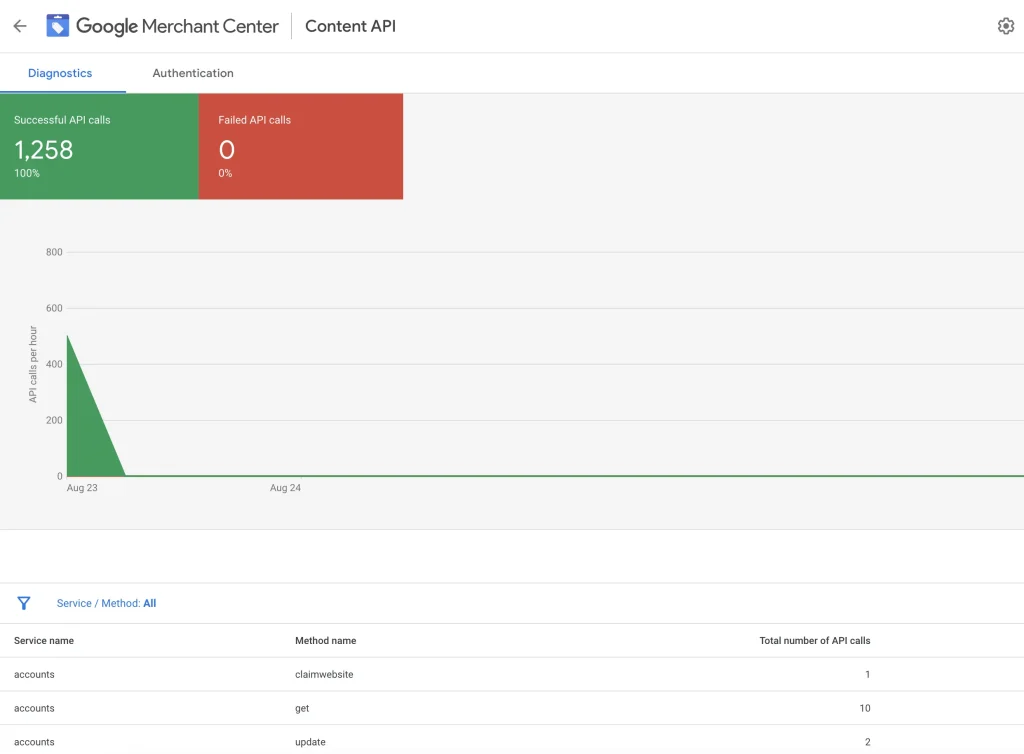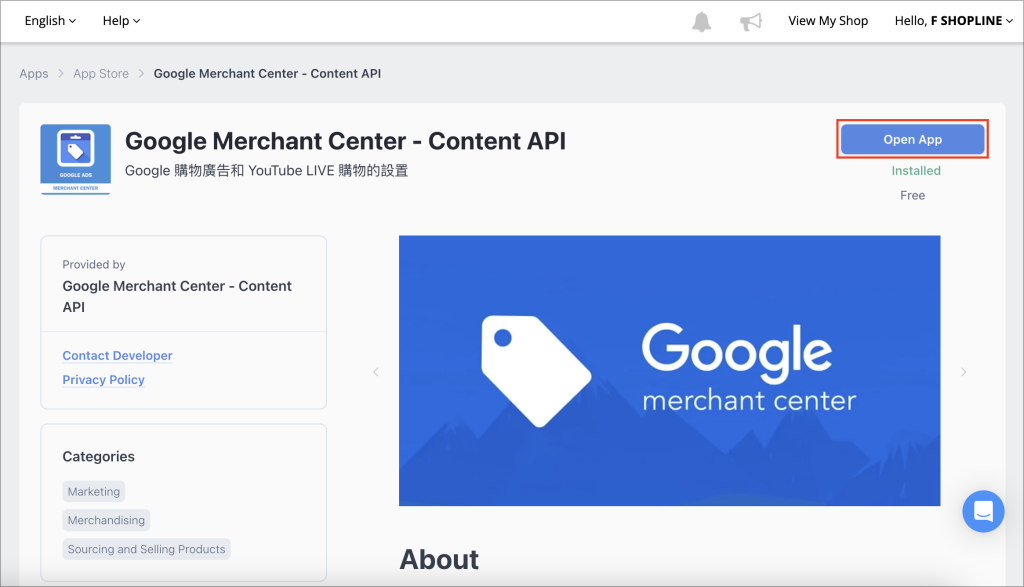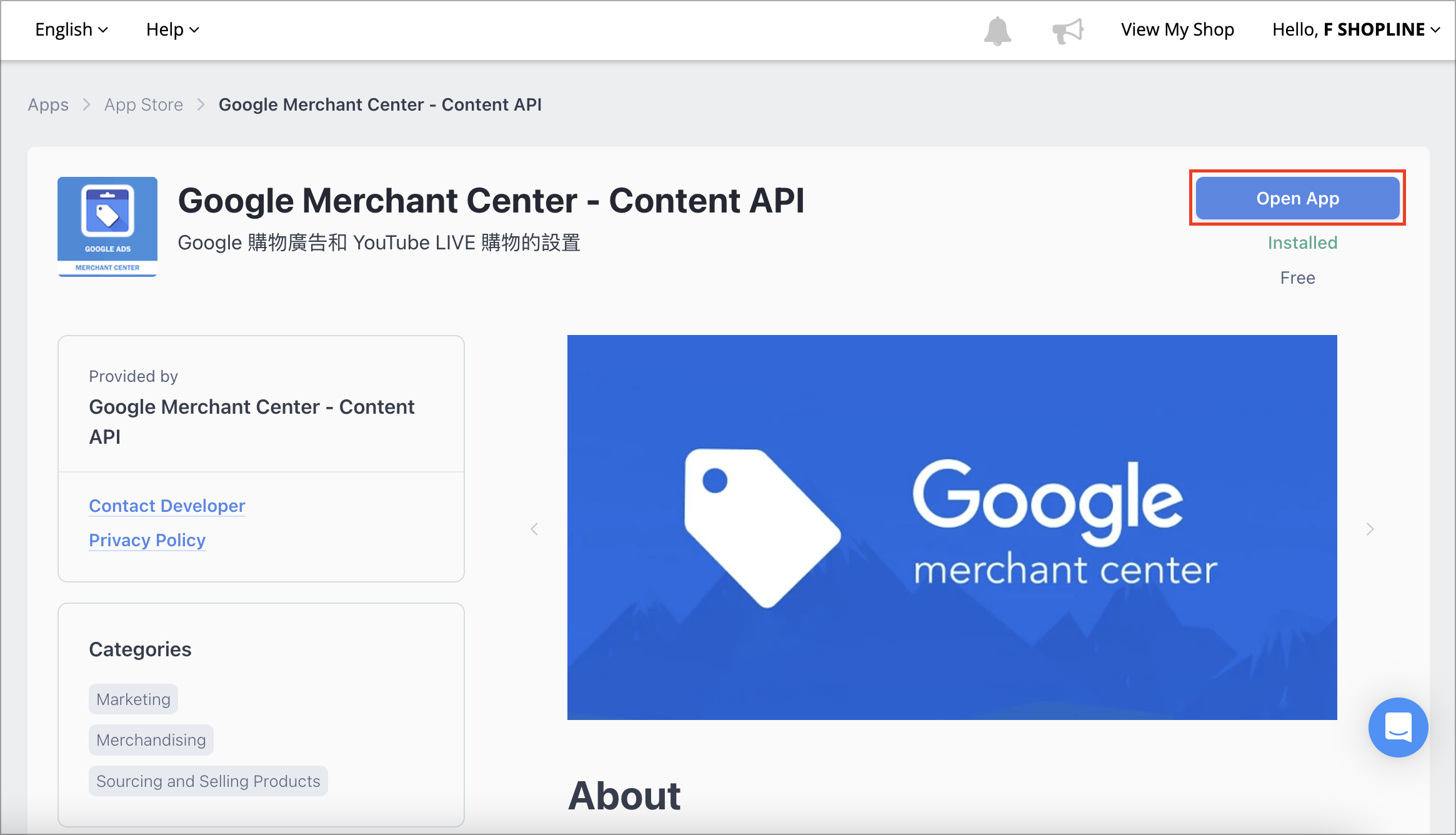Hey, Dave Fox here from Starscape SEO. Google Merchant Center (GMC) is an essential tool for businesses looking to advertise their products across Google’s various platforms, including Google Shopping, Google Ads, and more.
While the standard interface of Google Merchant Center provides plenty of functionality, the Content API takes this a step further, offering businesses a way to manage their product data programmatically.

But what exactly is Google Merchant Center’s Content API, how does it relate to SEO, and how can it benefit your business? Let’s dive in.
What is Google Merchant Center’s Content API?
Before I get into how this all relates to SEO, let’s talk about what Content API is in the context of Google Merchant.
The Content API for Google Merchant Center is an advanced tool that allows businesses to interact directly with their Merchant Center account through API calls.
This requires making an API key and operating outside of Merchant, and then coming back in and interfacing your tools that you’ve made with Merchant.
So, instead of manually updating product feeds or using the Merchant Center interface, businesses can automate the process of uploading, updating, and managing their product listings programmatically.

This API provides access to various features such as inserting new products, updating existing products, deleting products, managing account settings, and retrieving status reports on your listings.
Essentially, it gives businesses the power to fully automate the management of their product data, ensuring that the information displayed across Google’s platforms is always accurate and up-to-date.
Content API & SEO

SEO is basically being on the best possible terms with Google, and also taking advantage of every technology and platform Google offers.
For example, many businesses sell products, and many products can be sold online. Just like your website, the degree to which your website is seen, your blog posts are seen, and your products are seen, all hinges on your SEO being in good shape.
To tie it in with Google Merchant, Google Merchant’s selling platform allows you to sell your products in Google Shopping (ie. Google “Shopping” tab), and that’s a place where many businesses would want to be.
Products, when featured online and in Google in particular, can show up in a number of different places – search results pages, image carousels, and free and/or sponsored shopping listings – and you, as a business, presumably want your products to be seen as often as possible.
Therefore, getting into Google Merchant might be a goal you might have, and from there, you want your products inside Merchant to be SEO’d properly, otherwise they won’t show them. There are many ways to do this, but that is somewhat of a different subject.

The point is, the Google Merchant Content API gives you more autonomy over your feeds and products, and so it is adjacent to SEO because the more efficiently you control your products, the better your SEO becomes.
Websites are the same thing – the faster / smoother / more friendly your website is, and with more helpful content and just generally better for the user, the more Google, which runs mostly off decisions made by AI, likes you. The slower / clunkier / less aesthetic / less informative your website is, the more Google’s AI may decide to hide you from the public.
This whole concept also applies to Local SEO, which I talk about on this website a lot, as I myself am located in Kitchener-Waterloo Region and that’s my target audience.
No matter what localized region you live in, you may be most interested in selling locally, and so knowing how to grapple with Local SEO is beneficial, and Google Merchant is there for you in that regard too.
Now, the Content API may or may not cost you something, because in order to monkey around with it, you need to hop over to Google’s Cloud / Workspace platform and create your API key, and then from there, API calls work sort of like a phone plan.
For instance, you can’t make infinite calls for free – there is a cost of some sort, but I can’t say what it would be because it will be different for everyone. It may be free, or maybe not – I’m just saying. That said, it could be beneficial to your operation, which is exactly why I’m talking about it!
Key Features and Benefits of the Content API
Automation:
The primary advantage of the Content API is its ability to automate the management of product data.
Businesses can automatically sync their e-commerce platforms with Google Merchant Center, ensuring that any changes in inventory, pricing, or product details are reflected in real-time on Google.
Scalability:
For businesses with large product catalogs, manually updating product data can be time-consuming and prone to errors.
The Content API allows for bulk operations, making it easy to manage thousands of products efficiently and at scale.

Real-Time Updates:
Traditional product feeds might only update periodically, depending on the schedule set in Google Merchant Center.
With the Content API, updates can be made in real-time, reducing the lag between changes made on your site and when they appear on Google.
Improved Data Accuracy:
By automating the process, the Content API minimizes human error, ensuring that the product data displayed on Google is always accurate and consistent with what’s on your website.
Custom Integrations:
The Content API is highly customizable, allowing businesses to build bespoke solutions that fit their specific needs.
Whether you’re integrating with a custom CMS or managing multiple stores, the API provides the flexibility to tailor your product management process.
Detailed Reporting:
The API also allows businesses to retrieve detailed status reports on their products, including errors, warnings, and insights into how products are performing.
This data can be used to make informed decisions and optimize product listings for better visibility and sales.
Who Should Use the Content API?

While the Content API offers significant advantages, it’s not necessarily for everyone.
Here’s who might benefit the most:
Large E-commerce Businesses: If you manage a large catalog of products with frequent updates, the API can save you time and reduce the risk of errors.
Developers and Tech-Savvy Businesses: If you have a development team or technical expertise, the API offers powerful tools to create custom integrations and solutions tailored to your business needs.
Businesses Looking to Automate: If you’re seeking to automate your e-commerce processes and ensure real-time accuracy in your product data, the Content API is an invaluable tool.
Getting Started with the Content API
To start using the Content API, you’ll need to:
Enable API Access: You’ll need to enable API access in your Google Merchant Center account. This involves setting up authentication credentials and obtaining an API key.
Review the Documentation: Google provides extensive documentation on how to use the Content API. It’s important to familiarize yourself with the API endpoints, methods, and the data format required for requests.
Develop or Integrate Solutions: Depending on your needs, you can either develop custom software to interact with the API or integrate it with existing e-commerce platforms that support API interactions.
Test and Optimize: Before fully deploying your API solution, it’s crucial to test it in a sandbox environment to ensure it works as expected. Continuous monitoring and optimization will help you get the most out of the Content API.
Conclusion

Google Merchant Center’s Content API is a powerful tool that offers businesses the ability to manage their product data with greater efficiency and accuracy.
By leveraging this API, you can automate your product listings, scale your e-commerce operations, and ensure that your products are always accurately represented on Google’s platforms.
Whether you’re a large retailer or a tech-savvy business looking to streamline your processes, the Content API provides the flexibility and control you need to succeed in the digital marketplace.

